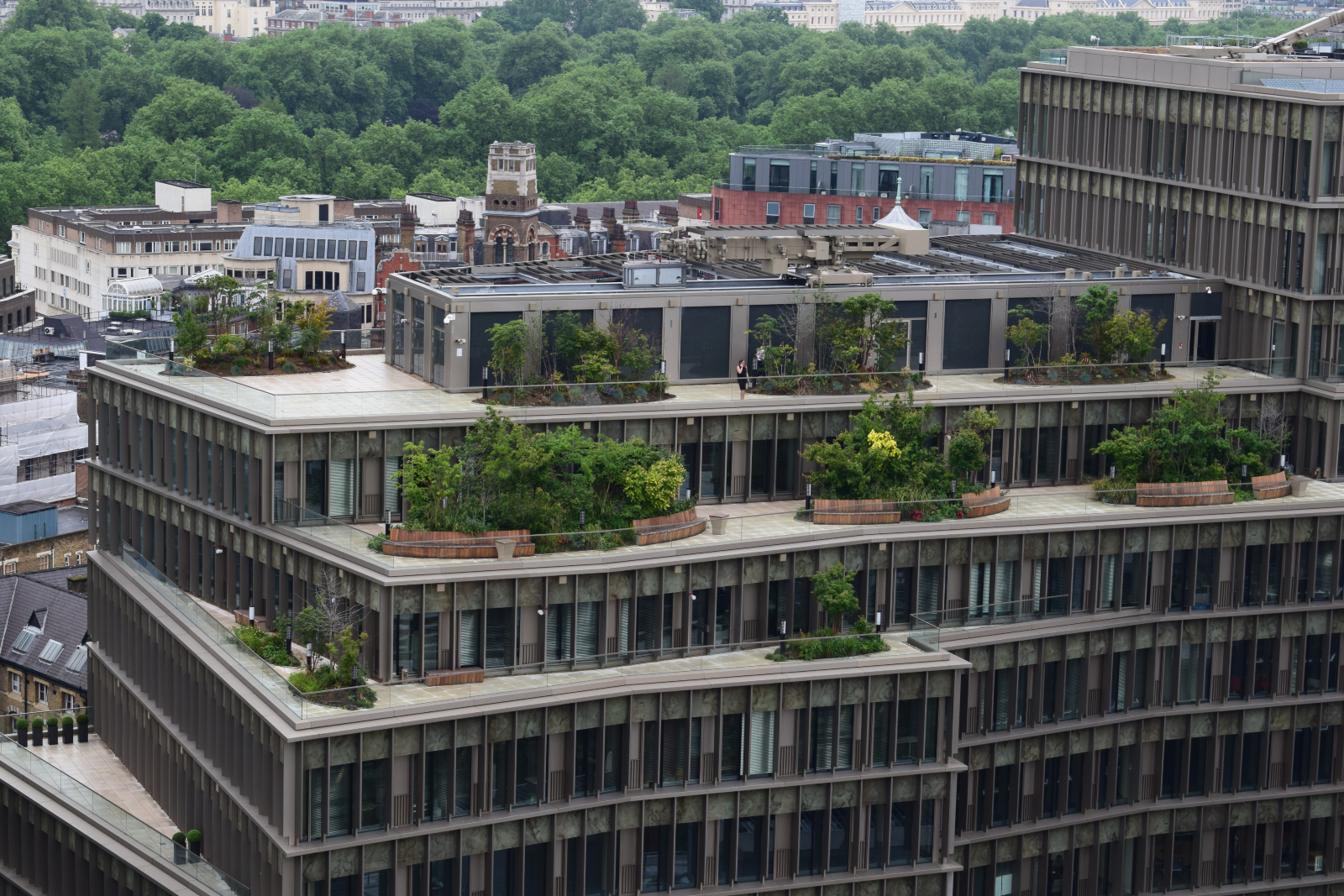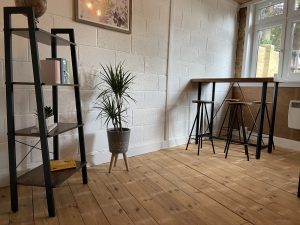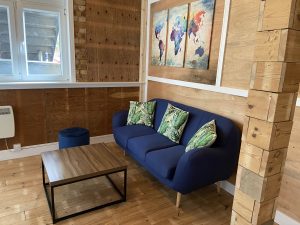
Did you know that the average person in the UK spends 22 hours of each day indoors? That’s 90% of their day!
While our on-site construction teams may be the exception to this, for office staff, the indoor life can have an enormous impact on productivity, health, wellbeing and overall happiness.
What’s to be done? Well, first of all, there’s an argument for encouraging people to simply get outside more often, however there’s also much that can be done to make buildings and interior spaces more comfortable and healthier.
In this week’s blog, we’re asking whether so-called ‘healthy’ buildings can lead to happier people.
Let’s look at an example of a building that’s been much admired for its use of health-boosting measures – the London headquarters of commercial property company, Landsec.
Before moving into this building, Landsec surveyed its staff and found that many were dissatisfied with uncomfortable work stations and poor levels of lighting, temperature and air quality. Recognising they needed to do something different, the company took a building from its own portfolio (100 Victoria Street) and set about refurbishing it using the WELL Building Standard as a framework.
Measures included maximising natural light, improving air quality and creating communal areas for staff such as informal spaces, meeting pods and sofas. Showers were installed for cyclists and runners, a healthy snack bar was set up and, with sit-stand and treadmill desks, staff were also encouraged to try out activity-based working.
The results speak for themselves. The refurbishment received BREEAM Outstanding and WELL Silver certification and, in a post-move survey, 88% of Landsec’s staff said the new office design enabled them to work productively.
Of course, not every company will be able to implement the same level of transformation as this into their work environments – especially if they are smaller businesses or are sharing a building with others. And, of course, with the impact of COVID-19 still seeing many people work from home, there’s also much to consider around home/work environments too.
However, it’s globally recognised that promoting physical activity and raising wellbeing in our buildings has significant benefits, not only around raising productivity but also for reducing chronic health conditions, increasing happiness, and attracting and retaining talent. The good news is it doesn’t have to involve a total refurbishment either. Here are some effective, yet cost effective, health-boosting measures to introduce into your workspace.
1. Let there be light
Natural light almost always tops the list of most desirable office attributes and sometimes this can be achieved simply by ensuring blinds are opened up every morning or moving a few desks around so that staff sit closer to windows.
Other tricks of the trade involve using ‘circadian lighting’ in place of normal LEDs. This type of lighting is designed to match the human body’s natural rhythm, for instance providing brighter, stronger light in the morning and lowering it as the day progresses. For anyone working in a small space at home, this could be a good option for creating a well-lit productive working area and then preparing the body for wind-down later.
2. Get some fresh air
While cracking open an office window might help reduce that post-lunch slump, taking an actual break outdoors gives the best results. A survey of 2000 employees and 1000 managers commissioned this year by Lenevo backs this up, finding that spending just 29 minutes outdoors resulted in a 45% increase in productivity and that 63% of employees felt better “in themselves” after getting some fresh air.
Another finding of the survey was that the coronavirus pandemic may actually have had one positive impact in helping employees to have more flexibility in their schedules and realise the benefit of an outdoor break. Interestingly, nearly three in five managers believed their staff had been more productive since they transitioned to remote work.
3. Green space
As humans, we all have an in-built connection to nature, so bringing something inspired by nature into any interior space is a great way to boost wellbeing, reduce stress and absenteeism, and increase productivity.
You can do this with some well-placed plants/ foliage or add design features that use materials, sounds, patterns and colours that mimic the natural world. For example, at Sheriff Construction, we recently took this idea on board when designing our new office staff room, incorporating rustic wooden furniture, plants, pictures and soft furnishings with leafy patterns.
4. Adapt workspaces to encourage movement
This may be a bit trickier than normal under the current coronavirus guidelines, but wherever possible, it’s a good idea to encourage movement by building flexibility into how and where employees work. That might mean creating some designated spaces for different activities (e.g. open areas for collaborative work and quieter pods for thinking) but it could also mean allowing employees to adjust their own workspace (e.g. with a sit-stand desk). For those working from home, it could be something really simple as setting a regular alarm throughout the day that encourages them to stand up and move around for a while.
5. Hydrate and nourish
Dehydration (even at low levels) can impair cognitive ability and leave us lacking in energy, so a good supply of easily accessible drinking water is a must for any office environment.
Where the workplace has a canteen, you can also encourage positive eating habits by labelling ingredients and offering lots of healthy snacks. For those working at home, avoid the temptation of the biscuit barrel by keeping some healthier options to hand (e.g. unsalted nuts and dried fruits).
Healthy building work
Promoting better health and wellbeing in the workplace is a real priority area for many businesses and, with the added impact of COVID-19 and remote working habits, it’s really important to recognise that this now applies as much to home offices and kitchen table workstations as it does to commercial office environments.
In our view, these types of health-boosting measures (access to natural light, fresh air, green spaces, adaptable workspaces and healthy food) may take a bit of creative thinking but in general, they can all be relatively simple to achieve. The resulting rise in productivity, staff satisfaction and happiness levels has got to make it worth it.
Date: TBC
Feature image: Moravian/Shutterstock.com










